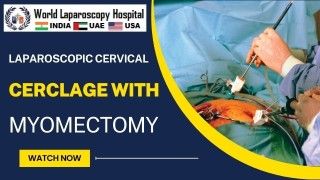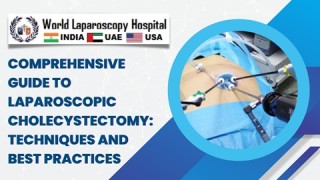Laparoscopic Management of Intramural Fibroid
Add to
Share
93 views
Report
1 month ago
Description
Intramural fibroids are the most common type of uterine fibroids, developing within the muscular wall of the uterus. Depending on their size and location, they can cause symptoms such as heavy menstrual bleeding, pelvic pain, infertility, and pressure effects on the bladder or bowel. With advancements in minimally invasive surgery, laparoscopic management of intramural fibroids has become a preferred approach, offering effective treatment with reduced morbidity compared to traditional open surgery. Understanding Intramural Fibroids Intramural fibroids are benign smooth muscle tumors of the uterus. They may remain asymptomatic for years but can significantly impact a woman’s quality of life if they enlarge or distort the uterine cavity. Diagnosis is typically confirmed through ultrasound or MRI, which helps in mapping the fibroid’s exact size, number, and location before planning surgical intervention. Role of Laparoscopy in Fibroid Surgery Laparoscopic surgery provides surgeons with magnified visualization of pelvic structures, allowing precise dissection and removal of fibroids while preserving uterine integrity. It is particularly beneficial for women seeking fertility preservation. Key Advantages of Laparoscopic Management Minimal incisions: Reduces postoperative pain and scarring. Shorter recovery time: Most patients resume daily activities within a week. Lower blood loss: Advanced energy devices and meticulous surgical techniques reduce bleeding risk. Fertility preservation: Myomectomy by laparoscopy maintains uterine structure. Reduced hospital stay: Patients are usually discharged within 24–48 hours. Surgical Techniques in Laparoscopic Management Laparoscopic Myomectomy: Best suited for women who wish to retain fertility. Involves enucleation of fibroid while carefully repairing the uterine wall with intracorporeal suturing. Laparoscopic Hysterectomy (for large symptomatic fibroids): Recommended when fertility preservation is not required. Complete removal of the uterus eliminates recurrence risk. Morcellation Technique: Fibroids are cut into smaller fragments for removal through small trocar sites. Use of contained morcellation is now emphasized to prevent tissue spread. Patient Selection and Preoperative Considerations Ideal candidates: Women with symptomatic intramural fibroids, typically less than 10–12 cm, who are otherwise fit for laparoscopy. Preoperative medical therapy (e.g., GnRH agonists) may be used to shrink fibroid size and reduce intraoperative blood loss. Detailed counseling regarding risks, benefits, and recurrence possibilities is essential. Outcomes and Prognosis Laparoscopic management of intramural fibroids has shown excellent results in improving symptoms, enhancing fertility outcomes, and reducing recurrence when compared with conservative medical management. With skilled surgical expertise, complications are minimal, and long-term prognosis remains highly favorable.
Similar Videos






